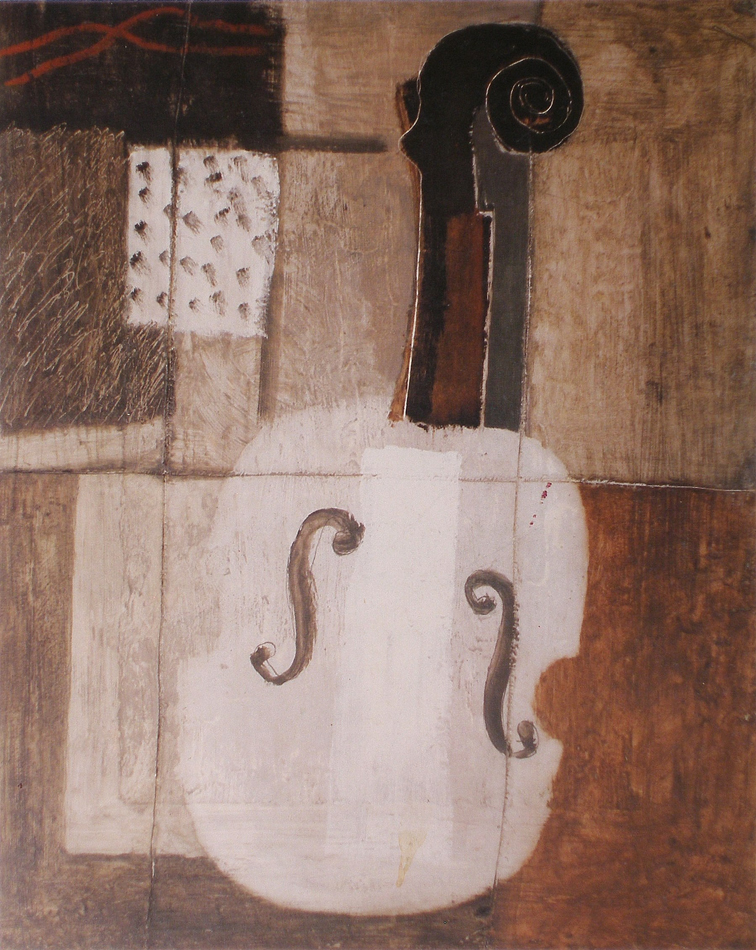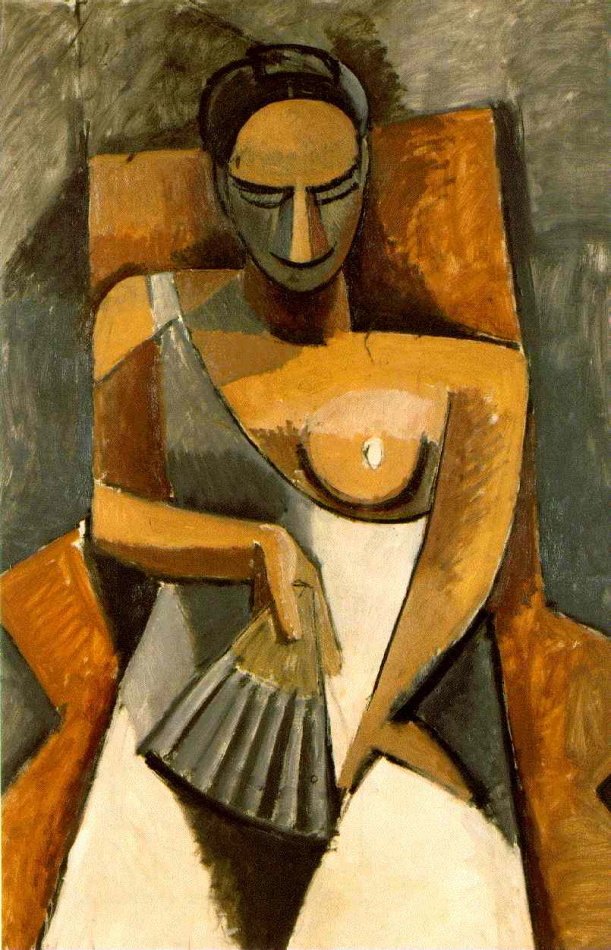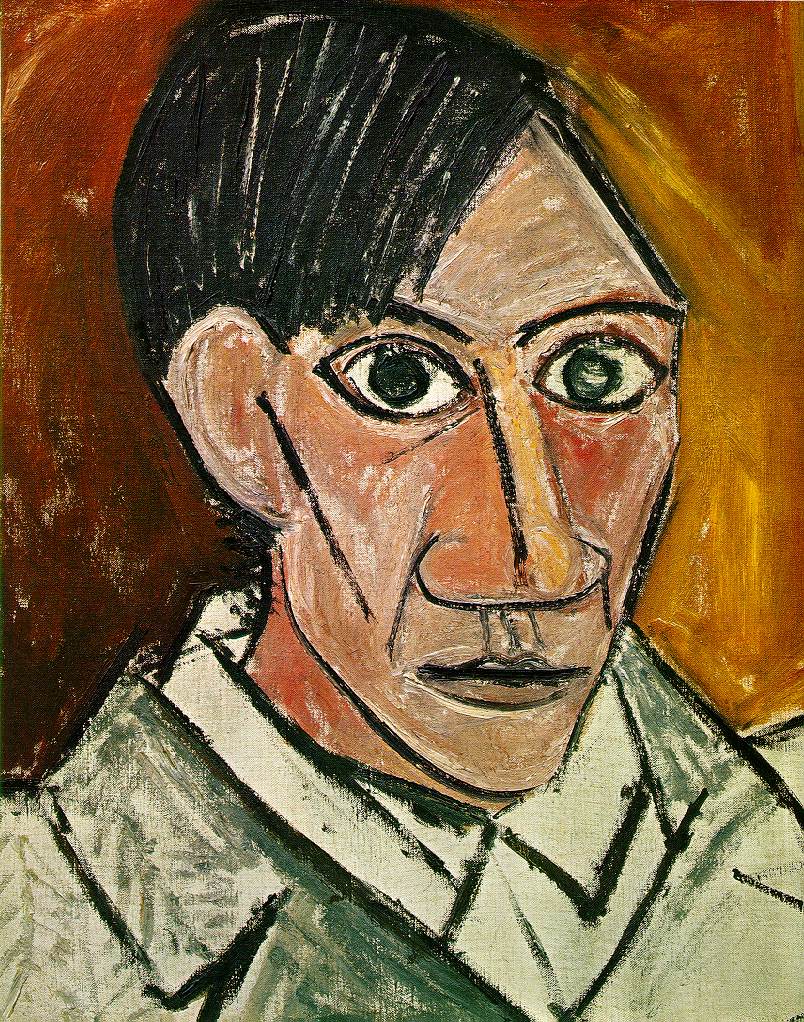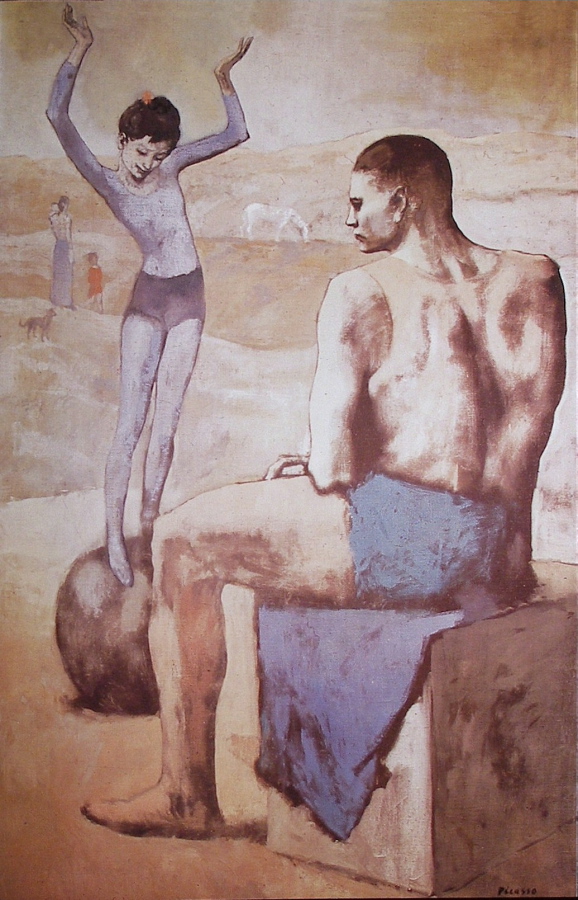This painting is an excellent example on how artists allow recent influences to show in their development. Nicholson engaged with Cubism as a means to refine and personalize his awareness of this major development in contemporary painting, and used it to provide a solid foundation for his journey towards abstraction. Here, like Picasso and Braque, he uses the picture plane while simultaneously shifting our view to provide the sense of space.
The lines of the grid are both in front and behind the violin, conveying the feeling of space. I love the repeating rhythm of a series of vertical rectangles and how their dance gently contains my perusal. Can you feel how the white one is nearer and the others recede? You are meant to sense this dance rather than see the harmony they provide in the composition. The two verticals patterned with dots is open to interpretation ( I think of the act of playing the instrument and the rhythmic lines at the upper left is the sound of the music.)
The wonderful “shifting of space” in the body of the violin, the positioning of the F-holes and showing us the side view of the neck and scroll not only shows Nicholson’s understanding of cubism, it also shows us his restraint and refinement of this great consideration in twentieth century painting.




